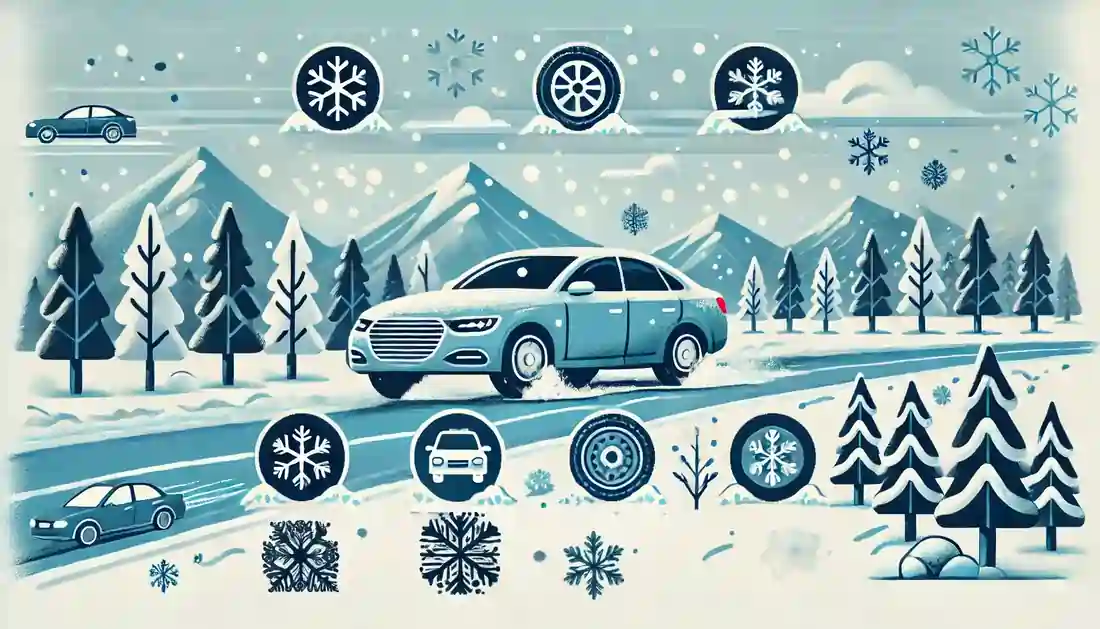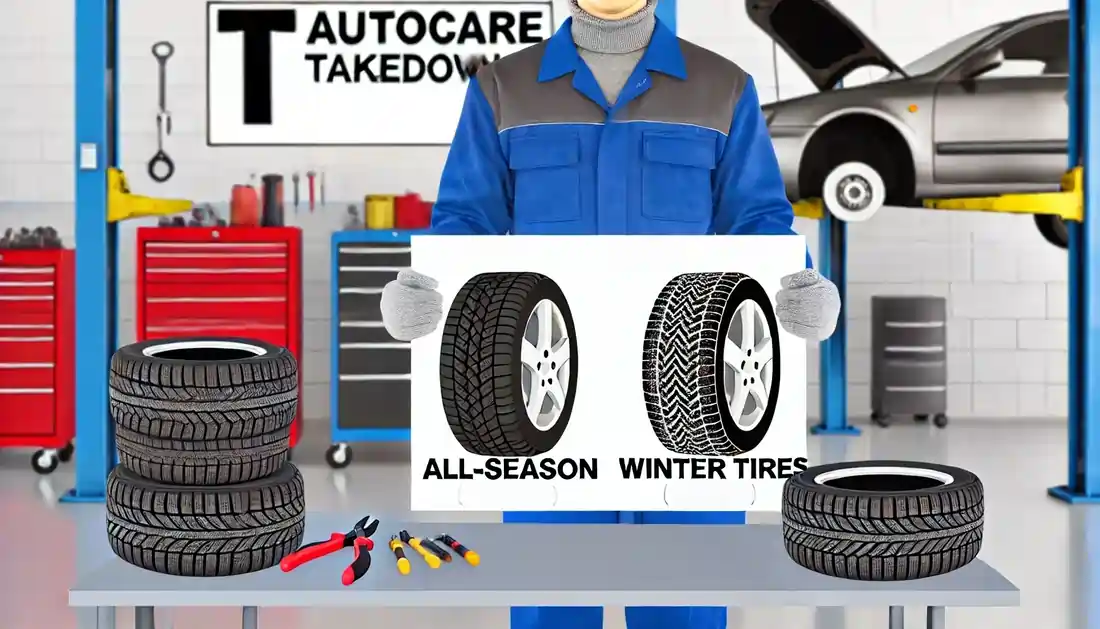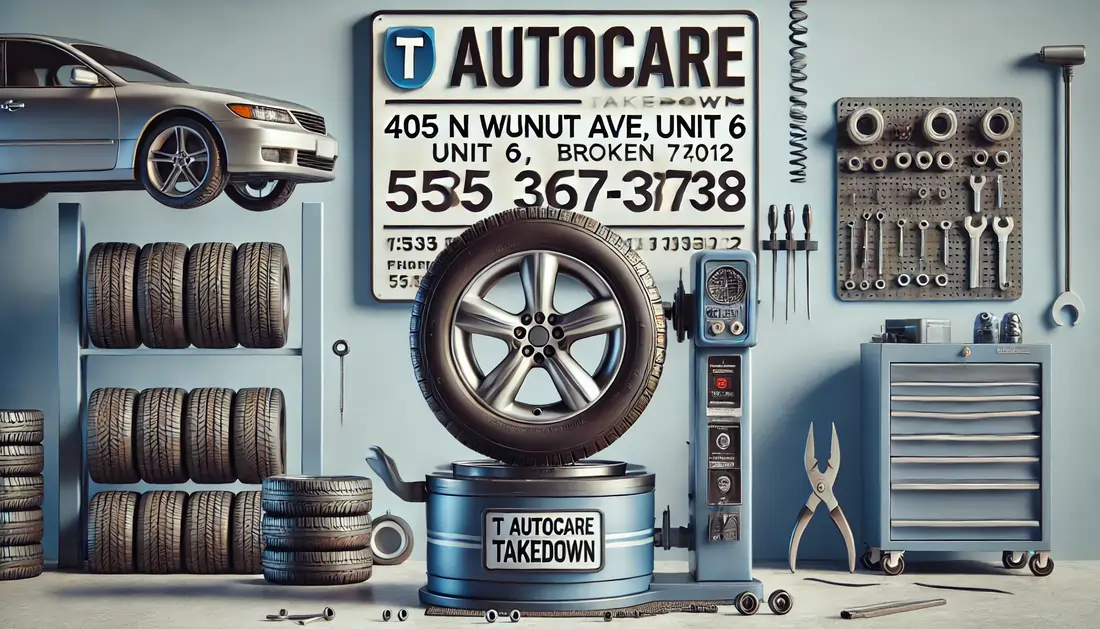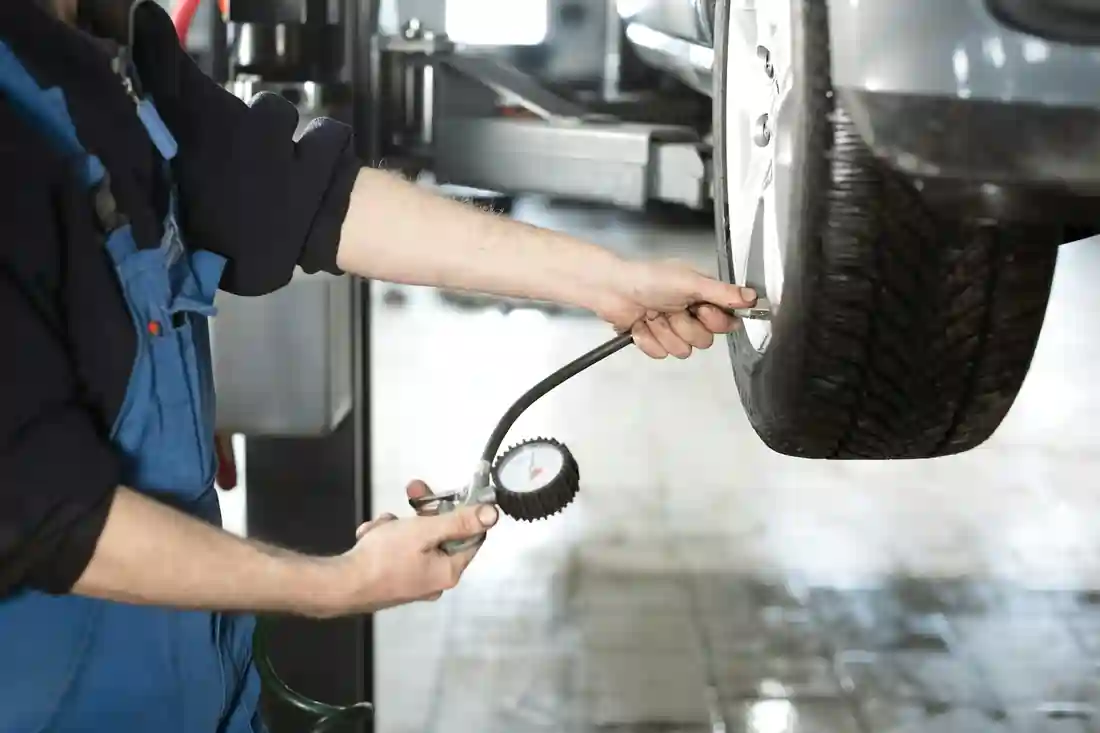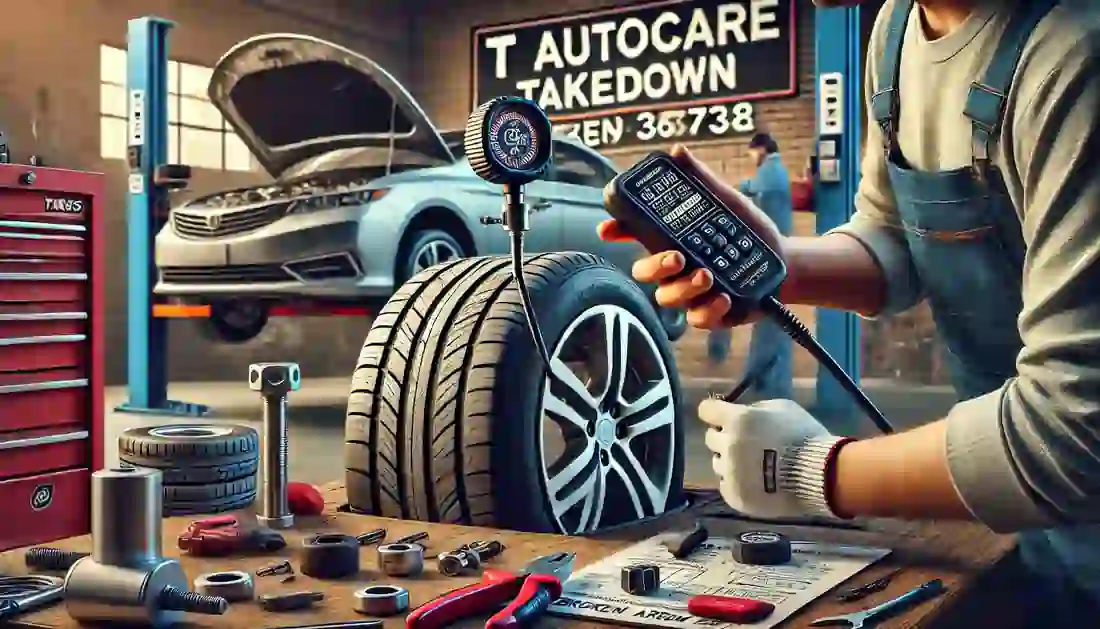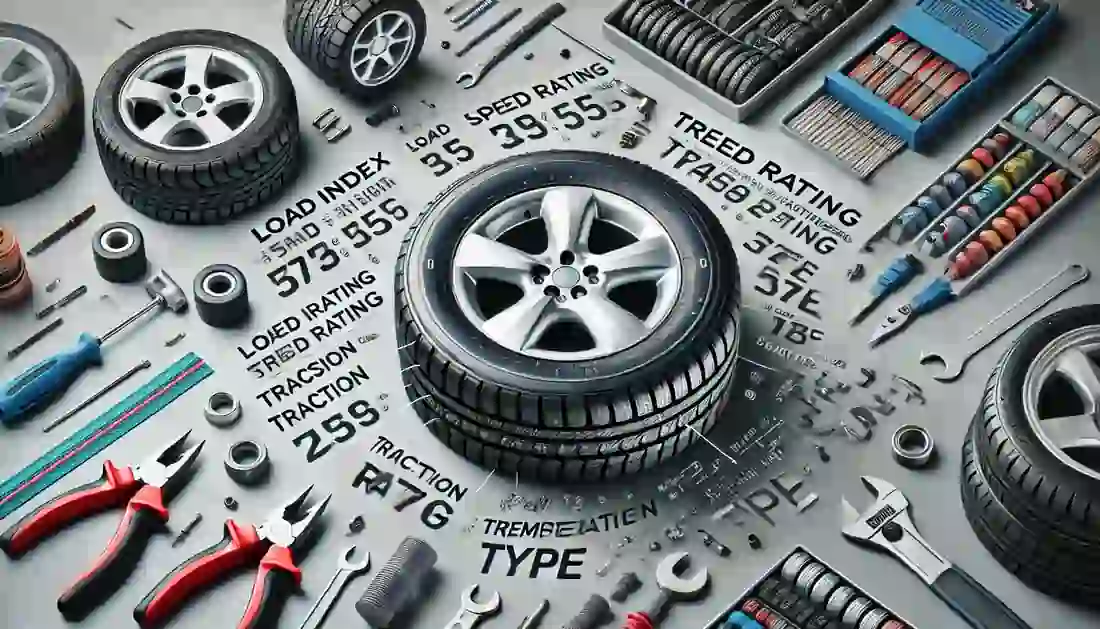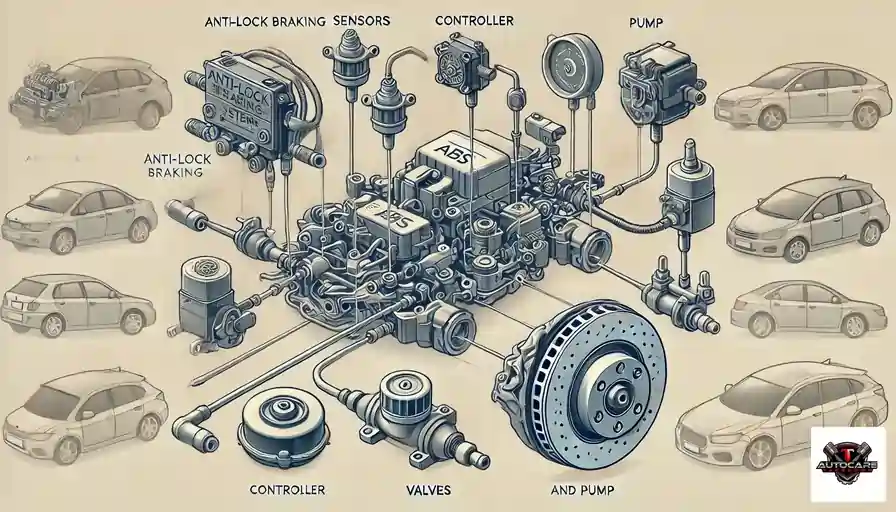Driving in rainy conditions can be challenging and dangerous due to slick roads and reduced visibility. At T Autocare Takedown, we prioritize your safety and want to ensure you’re well-prepared for any weather. Here are essential tips to help you stay safe on the road during rainy conditions.
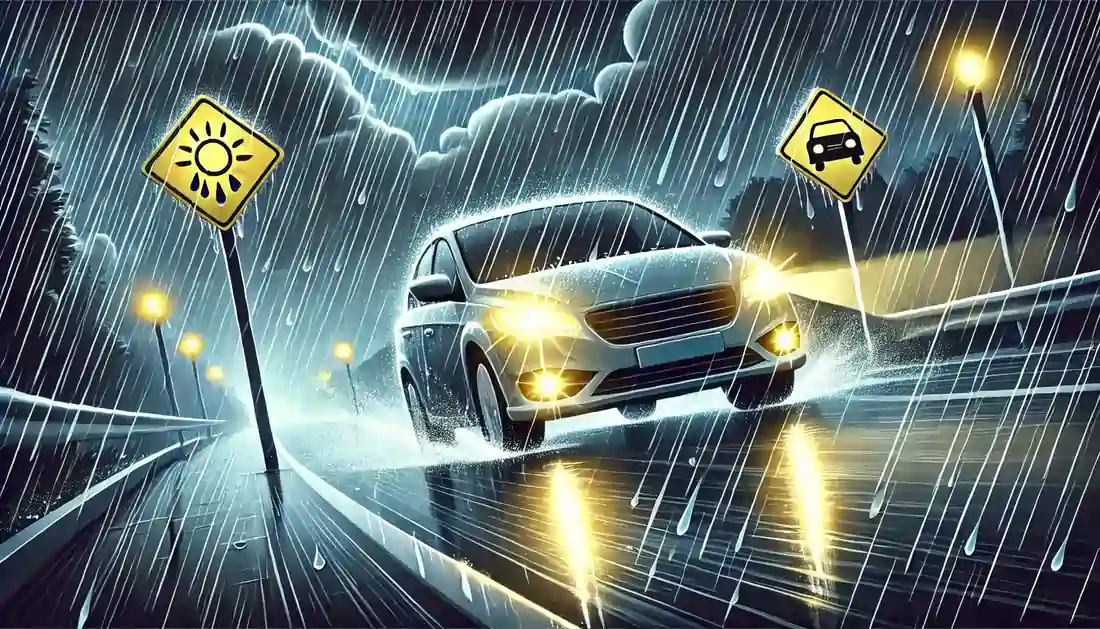
Preparing Your Vehicle
Check Your Tires
Proper tire maintenance is crucial for safe driving in the rain. Ensure your tires have sufficient tread depth and are properly inflated.. This enhances traction and reduces the risk of hydroplaning. A simple way to check tread depth is by using a quarter; if you can see the top of Washington’s head, it’s time for new tires.
Inspect Your Wipers and Lights
Clear visibility is vital. Replace windshield wipers if they leave streaks or make noise.. Ensure all lights, including headlights, taillights, and turn signals, are functioning correctly. If you notice any issues, check out our light repair services to get them fixed promptly. This not only helps you see the road but also makes your vehicle visible to others.
Test Your Brakes
Effective brakes are essential for stopping safely on wet roads. If you notice any issues with your brakes, such as squeaking or reduced responsiveness, check out our guide on common brake problems and have them inspected and repaired by a professional mechanic.
Driving Techniques in Rain
Slow Down
Reducing your speed is one of the most important steps you can take to avoid accidents in the rain. Wet roads can be slick, increasing the likelihood of hydroplaning. Maintain a safe following distance to give yourself ample time to react to any sudden stops.
Avoid Cruise Control
Using cruise control in wet conditions can be dangerous. It can cause your vehicle to accelerate unexpectedly if you hydroplane. Stay fully engaged in driving by controlling your speed manually.
Turn on Your Headlights
Visibility is often reduced during rain, so turning on your headlights is essential. This not only helps you see the road but also makes your vehicle more visible to other drivers.
Use Defrosters
Rain can cause your windows to fog up, obstructing your view. Use your car’s front and rear defrosters to keep windows clear and maintain visibility.
Your car’s cooling system plays a critical role in maintaining proper temperatures and clear visibility in wet conditions. Learn how to maintain your car’s cooling system to ensure reliable performance in all weather.
Handling Emergency Situations
Hydroplaning
If your vehicle starts to hydroplane, it’s important to stay calm. Gently ease off the gas pedal and steer in the direction you want to go. Avoid sudden movements, as they can cause you to lose control.
Skidding
If your car begins to skid, steer in the direction you want the vehicle to go and avoid slamming on the brakes. This helps you regain control without causing further instability.
Flooded Roads
Never drive through flooded areas. Even a small amount of water can cause your engine to stall or your vehicle to float. Turn around and find an alternate route to avoid getting stranded. It’s also important to have essential items for your car’s emergency kit on hand in case of emergencies.
Night Driving in Rain
Reduce Glare
Use low-beam headlights to minimize glare and improve visibility. Avoid looking directly at oncoming lights by focusing on the road markings or the edge of your lane.
Extra Caution
Driving at night in the rain requires extra caution. Reduce your speed and increase the distance between your car and other vehicles to give yourself more time to react to unexpected situations.
Additional Safety Tips
Be Predictable
Use your turn signals early and maintain a consistent speed. This helps other drivers anticipate your actions, reducing the risk of collisions.
Know Your Route
Familiarize yourself with roads that may flood or become slick. Having alternate routes planned can help you avoid dangerous areas during heavy rain.
Emergency Preparedness
Keep an emergency kit in your vehicle. Include essentials such as a first aid kit, food, water, a flashlight, and a poncho. Being prepared can make a significant difference if you encounter any issues on the road.
Utilize Your Ventilation System
Proper use of your car’s ventilation can prevent windows from fogging up. This ensures you maintain clear visibility throughout your drive.
Conclusion
Driving in rainy conditions requires extra caution and preparedness. By following these tips, you can reduce the risk of accidents and ensure a safer journey. At T Autocare Takedown, we are dedicated to keeping your vehicle in top condition. Visit us for comprehensive auto repair, car maintenance, and vehicle repair services to ensure your car is ready for any weather. Learn more about why customers choose us and what sets us apart from other shops.
When driving in wet conditions, it’s crucial to keep your vehicle well-maintained to handle slippery roads effectively.
If you need professional auto repair in Broken Arrow, our team is here to help with tire rotations and other essential services to keep you safe on the road.
For more information or to schedule a service, contact T Autocare Takedown at (539) 367-3738 or visit us at 1501 W Detroit St, Broken Arrow, OK 74012. Stay safe on the roads! You can also explore our sitemap to find more helpful resources.
References
- Defensive Driving Tips – Driving Safely in the Rain (defensivedriving.org)
- State Farm – Tips for Driving Safely in the Rain (State Farm)
- AAA Exchange – Wet Weather Driving Tips (AAA)
- Driving-Tests.org – Driving in the Rain (driving-tests.org)
- Drive Safely – Safe Driving Tips for Rainy Conditions (idrivesafely.com)
- Zutobi Drivers Ed – Safety Tips for Driving in the Rain (Zutobi Drivers Ed)

